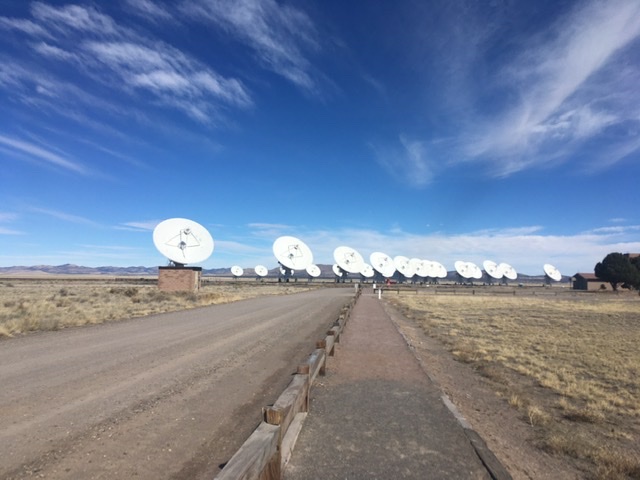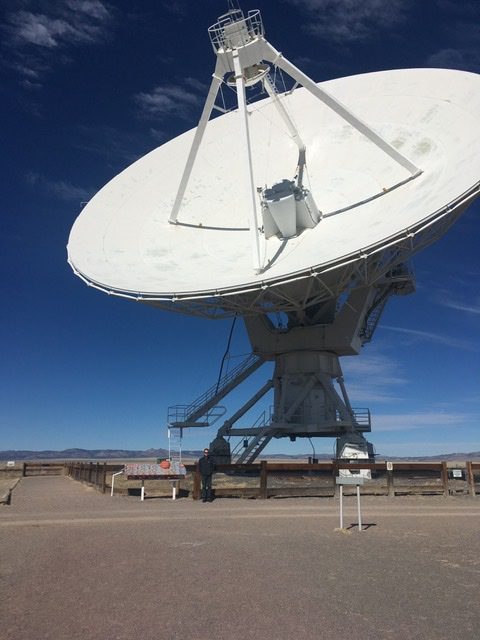We headed south from Albuquerque and took a detour to visit the National Radio Astronomy Observatory Very Large Array. This place is in the middle of nowhere. It has 27 huge dishes measuring 82 feet across. They are mounted on railroad tracks in a y configuration and can be moved over 82 miles of track to different positions. They pick up radio waves from different galaxies to discover black holes and study cool stuff. A lot of the recent breakthroughs and discoveries in astronomy have been made here.
Categories: Uncategorized


2 Comments
Susan · January 29, 2020 at 12:11 am
Way cool!
Kevin · January 31, 2020 at 12:55 am
Looking as this array brings this bit to mind:
NASA/Goddard/University of Arizona)
A NASA asteroid-sampling probe has begun circling its space-rock target, setting a new record for the smallest body ever orbited by a spacecraft.
OSIRIS-REx set a new mark today for the closest orbit of a small body. The probe is now circling about 1 mile (1.6 km) from Bennu’s surface. The OSIRIS-REx probe achieved orbit around the 1,640-foot-wide (500 meters) near-Earth astero.
id Bennu
OSIRIS-REx’s orbital insertion was the first of two big spaceflight events occurring within a span of mere hours. NASA’s New Horizons spacecraft will zoom past the small object Ultima Thule at 12:33 a.m. Tuesday (Jan. 1 2018), performing the most-distant planetary flyby in history.
Ultima Thule is about 4 billion miles (6.4 billion km) from Earth — 1 billion miles (1.6 billion km) beyond Pluto, which New Horizons visited in July 2015.
Comments are closed.